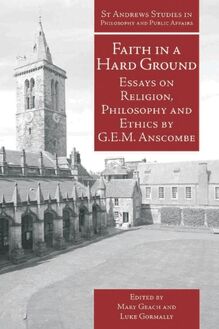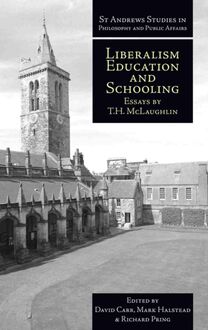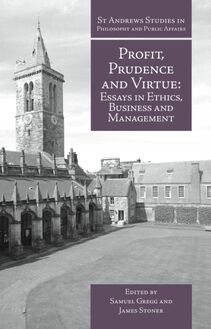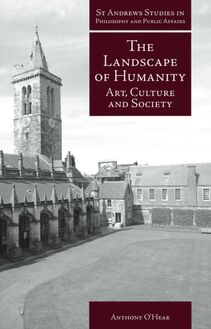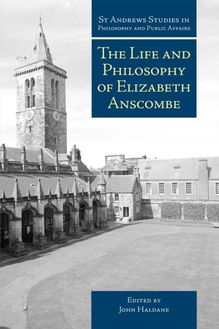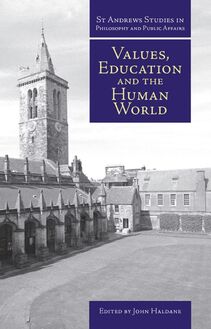Landscape of Humanity , livre ebook
165
pages
English
Ebooks
2011
Vous pourrez modifier la taille du texte de cet ouvrage
Obtenez un accès à la bibliothèque pour le consulter en ligne En savoir plus
Découvre YouScribe en t'inscrivant gratuitement
Découvre YouScribe en t'inscrivant gratuitement
165
pages
English
Ebooks
2011
Vous pourrez modifier la taille du texte de cet ouvrage
Obtenez un accès à la bibliothèque pour le consulter en ligne En savoir plus
Publié par
Date de parution
29 novembre 2011
Nombre de lectures
2
EAN13
9781845402815
Langue
English
Poids de l'ouvrage
1 Mo
Publié par
Date de parution
29 novembre 2011
Nombre de lectures
2
EAN13
9781845402815
Langue
English
Poids de l'ouvrage
1 Mo
Title Page
THE LANDSCAPE OF HUMANITY
Art, Culture and Society
Anthony O’Hear
Title Page Verso
Copyright © Anthony O’Hear, 2008
The moral rights of the author have been asserted.
No part of this publication may be reproduced in any form without permission, except for the quotation of brief passages in criticism and discussion.
Originally published in the UK by Imprint Academic
PO Box 200, Exeter EX5 5YX, UK
Originally published in the USA by Imprint Academic
Philosophy Documentation Center
PO Box 7147, Charlottesville, VA 22906-7147, USA
Digital version converted and published in 2011 by
Andrews UK Limited
www.andrewsuk.com
Cover Photograph:
St Salvator’s Quadrangle, St Andrews by Peter Adamson from the University of St Andrews collection
Dedication
To Tricia, Natasha, Jacob and Thea
ad familiam meam amandam amatamque
Preface
The fifteen essays in this book have been written over a period of years, from the early 1990s to the time of publication (2008). Most have already been published in some form, though all have been revised to a greater or lesser extent for this volume. This is to reduce repetition and inconsistency as far as possible, and also to take account of developments in my thinking where these bear on the topics under discussion.
In the order in which they appear in this volume, the original places of publication are as follows:
‘Evolution and Aesthetics’
in Biology, Evolution and Life , edited by A. O’Hear, Cambridge University Press, 2005, pp 155-76.
‘Historicism and Architectural Knowledge’
in Philosophy, 68, 1993, pp 127-44.
‘Prospects for Beauty’
in Philosophy at the New Millennium, edited by A. O’Hear, Cambridge University Press, pp 175-91.
‘Kantian Disinterestedness’
not previously published; part of a paper on the approaches of Dürer and Cranach to the illustration of the Book of Revelation, written jointly with Natasha O’Hear, and presented to the D Society at the University of Cambridge in February 2007.
‘The real or the Real? Chardin or Rothko?’
in Philosophy, Religion and the Spiritual Life edited by Michael McGhee, Cambridge University Press, 1992, pp 47-58.
‘Two Cultures Revisited’
in Verstehen and Humane Understanding , edited by A.O’Hear, Cambridge University Press, 1997, pp 1-17.
‘Art and Censorship’
in Philosophy, 66, 1991 , pp 512-16.
‘To Swim with Strong Strokes in the Lake of Antique Poetry’
lecture given at the Prince of Wales’ Educational Summer School, Buxton, Derbyshire, June 27th, 2004, and published in a slightly different version as the Epilogue to the author’s The Great Books , Icon Books, Thriplow, Cambridge, 2007, pp 433-49.
‘Art and Technology: an Old Tension’
in Philosophy and Technology , edited by Roger Fellows, Cambridge University Press, 1995, pp 143-58.
‘Science and Religion’
in The British Journal for the Philosophy of Science, 44, 1993 , pp 505-16.
‘Democracy and Openness’
in Political Philosophy , edited by A. O’Hear, Cambridge University Press, 2006, pp 39-56.
‘Hayek and Popper: The Road to Serfdom and The Open Society ’
in The Cambridge Companion to Hayek , edited by Edward Feser, Cambridge University Press, 2006, pp 123-47.
‘Criticism and Tradition in Popper, Oakeshott and Hayek’
in The Journal of Applied Philosophy, 9, 1992 , pp 65-75.
‘ The Open Society Revisited’
in Karl Popper: Critical Appraisals , edited by Philip Catton and Graham Macdonald, Routledge, Abingdon, 2004, pp 65-75.
‘Britain and Europe: an Oakeshottian Meditation’
not previously published.
I would like to thank the various publishers concerned for permission to reprint previously published material in this volume.
I would also like to thank Professor John Haldane, General Editor of the St Andrews Studies in Philosophy and Public Affairs , whose idea the volume was, both for his faith in the project and also for our many conversations over the years.
Anthony O’Hear
April 2008
Introduction: The Landscape of Humanity
The fifteen essays in this book collectively develop a conception of human culture, which is humane and traditionalist, and which also sees within human experience pointers to a world beyond the material. The first five essays focus on the aesthetic in general and on beauty in particular, in an attempt to uncover what is involved in both notions, and how on the one hand they relate to our embodied existence, and how on the other they evoke intimations of transcendence. The second set of five essays all touch on human culture in a broader sense, by exploring within culture the specific places of science, of religion, and of what we might think of as the expressive arts. We look at the place within a culture of a tradition of great books and also of technology in relation to artistic expression, as well as considering reasons why censorship might be seen as necessary in relation to art. The final selection of five essays focuses on politics, and particularly on the potential tensions between calls for democratic openness in a society and the need in any viable society for a settled background of tradition. These tensions are explored in relation to multi-culturalism and to the European federalist project.
Art
In the first chapter, I consider the relation between biological evolution and our aesthetic sense. As suggested at various points in this collection, one of the tasks of human existence is precisely to experience the world through our sense and sensibility, to articulate and reflect on that experience, giving voice and expression to what we perceive and experience. Our embodiment is the starting point of all our aesthetic endeavours, and the point to which they will always return. As integral to our embodiment, we have a nature which we share in part with animals, and this includes responding favourably, perhaps even aesthetically to certain types of stimuli. Some of this may be due to events and adaptations way back in our evolutionary history. But examining the attempts of Darwin and others to find continuities between our aesthetic sense and animal responses leads us to see that human aesthetic responses go far beyond anything discernible in the animal kingdom. We appreciate beauty for its own sake, and we characteristically see in it intimations of a world beyond the material.
If our aesthetic sense and the works which are produced by us in response to it transcend the biological, are they free of historical and sociological determinism. As works of the human spirit, we should not see artistic activity and creation in deterministic terms, any more than the rest of history, or so I argue in the second chapter. We should resist attempts of art theorists to insist that as history is moving in a particular direction and progress has its own ineluctable demands, only one style or approach is valid at a particular time. Artists and architects are as free as anyone else to stand out against historical trends. Nevertheless all our creativity is rooted in tradition and in what has emerged from tradition, so we should be cautious about radical breaks with the past (especially when ‘progress’ is invoked to justify them). This tendency is, as I argue in the chapter, particularly dangerous in architecture, which has widespread and long-lasting effects, and if it goes wrong, these can be deeply de-humanising.
Chapters 3 and 4 address the topic of beauty. Much modern art is deliberately unbeautiful, and modern writers on art are reluctant to speak of beauty at all. The reasons for this are examined, but more important than the analysis of the cause is the need to re-assert the centrality of beauty to the aesthetic endeavour. Beauty should be one of the main aims of artistic endeavour, if not the main aim. It is through the pursuit of beauty as something to be sought for its own sake that art and the aesthetic evince their strongest intimations of transcendence. As these intimations spread out over the whole of human life, including the moral, the religious and the true, art cannot be confined in a purely ‘aesthetic’ realm, as Kant would have it with his doctrine of disinterestedness as a requirement of ‘pure’ beauty. Taking the depictions of the Book of Revelation by Dürer and Cranach respectively as examples, Chapter 4 is a critique of the Kantian thesis.
In the fifth and final chapter in the section on art, I argue that if our particular vocation as human beings is to articulate and respond to the world in our own particular way, then the best artists will include those who attend to human experience and the things which frame that experience and among which we live. Following Proust, I take Chardin to be a paradigm case here, one who quietly and meditatively explores the small things of the human world. By contrast, wiping away all the detail of our experience in an attempt to gain pure, immaterial expression, as Mark Rothko appeared to do, may be a human and artistic cul-de-sac. There are analogies here with theological attempts to cut loose from the symbolism and dogma of particular religions to set sail on the sea of undifferentiated ecumenical agreement, as I suggest, a point to which we return from a different angle at the end of the next section.
Culture
In the first chapter of the second part (Chapter 6), a distinction is drawn between science and culture more generally. Science prescinds from the subjective and the human, which is precisely where its strength derives. But the subjective and the human are the very areas which are at the heart of culture. They are at the core of the human world, what the phenomenologists refer to as the life world ( Lebenswelt ); they are the focus





